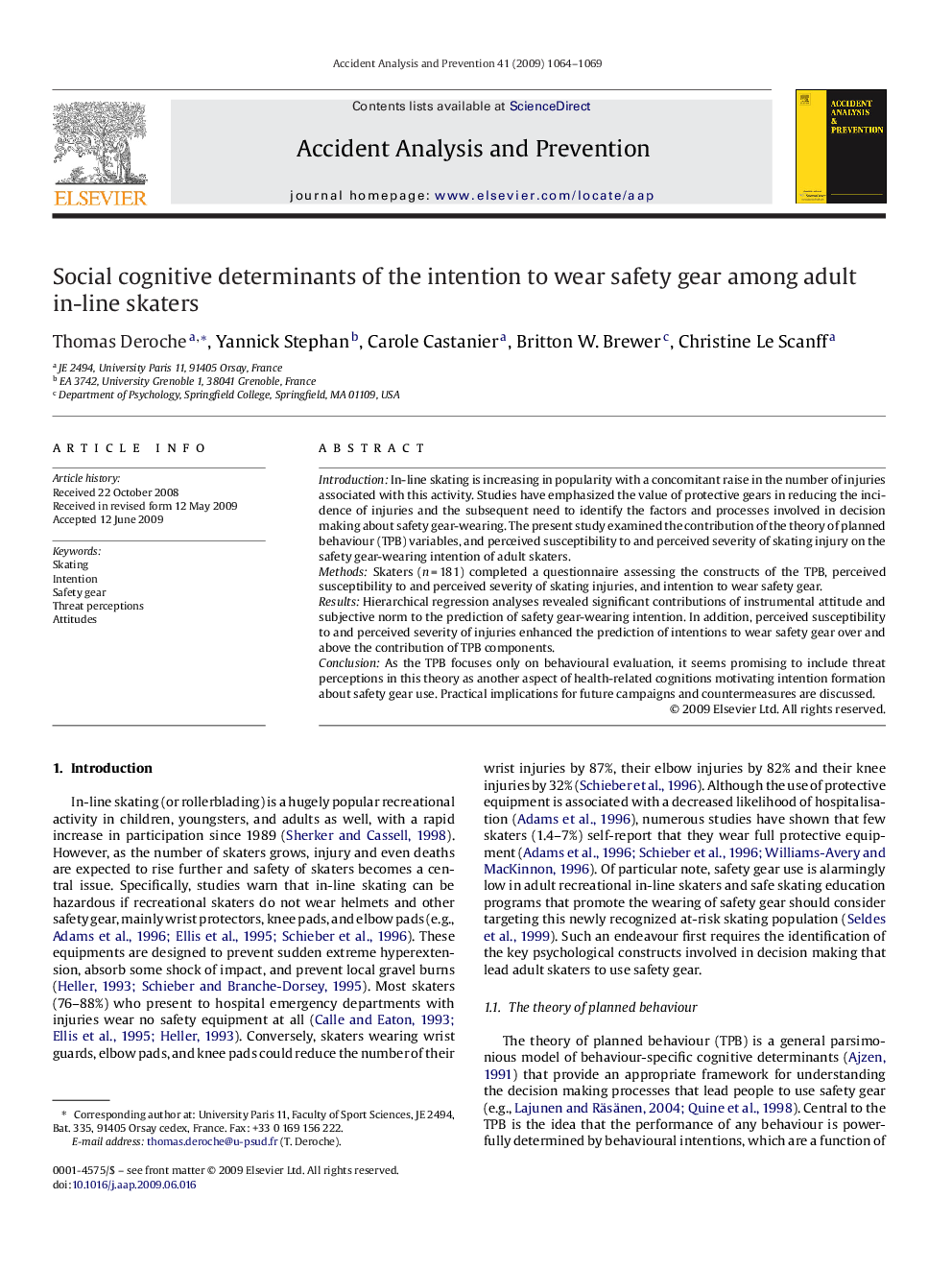| Article ID | Journal | Published Year | Pages | File Type |
|---|---|---|---|---|
| 573377 | Accident Analysis & Prevention | 2009 | 6 Pages |
IntroductionIn-line skating is increasing in popularity with a concomitant raise in the number of injuries associated with this activity. Studies have emphasized the value of protective gears in reducing the incidence of injuries and the subsequent need to identify the factors and processes involved in decision making about safety gear-wearing. The present study examined the contribution of the theory of planned behaviour (TPB) variables, and perceived susceptibility to and perceived severity of skating injury on the safety gear-wearing intention of adult skaters.MethodsSkaters (n = 181) completed a questionnaire assessing the constructs of the TPB, perceived susceptibility to and perceived severity of skating injuries, and intention to wear safety gear.ResultsHierarchical regression analyses revealed significant contributions of instrumental attitude and subjective norm to the prediction of safety gear-wearing intention. In addition, perceived susceptibility to and perceived severity of injuries enhanced the prediction of intentions to wear safety gear over and above the contribution of TPB components.ConclusionAs the TPB focuses only on behavioural evaluation, it seems promising to include threat perceptions in this theory as another aspect of health-related cognitions motivating intention formation about safety gear use. Practical implications for future campaigns and countermeasures are discussed.
